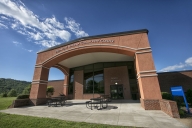You have /5 articles left.
Sign up for a free account or log in.
Questioning whether too many people are going to college is increasingly in vogue, posed in growing numbers of op-eds and articles in The Wall Street Journal and, more surprisingly, The New York Times.
It's a reasonable line of inquiry, and at a time when jobs for graduates are harder to come by (though easier for them than for non-graduates) and college tuitions keep rising, more and more scholars are trying to study the question empirically rather than merely opine about it.
The latest study to explore the issue, released Wednesday, comes from the Brookings Institution and the well-regarded labor economist Isabel V. Sawhill, co-director of Brookings' Center on Children and Families and a Clinton administration official. But the paper -- essentially a review of existing literature on the topic -- is facing sharp criticism, both philosophically and methodologically, from ideological friends and foes alike.
"Should Everyone Go to College?" is the title of the research brief co-written by Sawhill and Stephanie Owen, a senior research assistant at Brookings. (The news release promoting the study goes right ahead and answers the question that the paper itself poses: "Not Everyone Should Go to College, New Brookings Brief Finds," its headline reads.)
Echoing the work of researchers like Mark Schneider and Richard Vedder, and many of the commentators (mostly conservative) who have embraced the too-many-people-go-to-college argument, the authors assess the value of college-going solely through a financial prism, looking at “return on investment” and how to improve the market by which students choose colleges, and vice versa. (They do note, though, that there “are many non-monetary benefits of schooling which are harder to measure but no less important,” such as better health and other measures of individual well-being, and societal values such political participation and lower crime.)
Comparing the lifetime earnings of a typical bachelor’s degree holder to those with lesser degrees and high school diplomas, the authors concede that “on average, the benefits of a college degree far outweigh the costs.”
But the averages mask enormous variation that means that many individuals do not fare so well, and the authors spend the rest of the paper documenting the ways in which students’ return from their higher education may fall short based on the colleges, majors and careers they choose.
One table shows that the financial returns are significantly higher for those who attend selective institutions, and generally higher at public vs. private institutions. And citing data from Payscale.com, the authors go so far as to warn that “nearly two hundred schools … have negative ROIs” and to urge students to “think twice” about attending some specific colleges.
Owen and Sawhill cite data from the U.S. Census Department and the Georgetown Center on Education and the Workforce to make the case that there is also enormous variation based on choice of career and field of study, and that some high school graduates out-earn some college graduates.
When the differences in colleges’ graduation rates – and by extension particular students’ likelihood of getting a degree -- are thrown into the mix, “all of this suggests that it is a mistake to unilaterally tell young Americans that going to college -- any college -- is the best decision they can make,” the authors write.
“If they choose wisely and attend a school with generous financial aid and high expected earnings, and if they don’t just enroll but graduate, they can greatly improve their lifetime prospects,” they write. They argue for making more and better information available to students about college outcomes, simplifying the financial aid process, and encouraging vocational and other alternatives to a bachelor’s degree. “A bachelor’s degree is not a smart investment for every student in every circumstance,” they write.
Criticism, Philosophical and Practical
It is not at all surprising that some of Sawhill’s and Owen’s assertions trouble scholars who believe that access to and success in higher education is not equitable, and that there are barriers – in financial resources, academic preparation, and the like – that influence whether and where students enroll in college.
Amy Slaton, a historian of science at Drexel University, notes that nobody – including President Obama, whom the Brookings paper singles out for encouraging more college-going – is doing what the authors suggest: “telling all young people that they should go to college no matter what.” While the Obama administration and allies like the Lumina and Bill & Melinda Gates Foundation have aggressively encouraged college completion, even their (probably overly ambitious) goal would only have roughly 60 percent of Americans gain some sort of postsecondary credential (and far fewer earn a bachelor’s degree).
“Of course it’s not the right choice for everyone, and it’s a straw man to say that anyone thinks it is,” Slaton said in an interview. “But if you start from the premise that the best way to think about either individuals’ opportunities, or institutions’ performance, is on the basis of return on investment, you have to start from the premise that the system is fair, and that people’s choices about higher education are happening on an even playing field.”
By embracing the “free market” view that better information will better determine which students end up at which colleges, Slaton said, Sawhill and Owen completely ignore the role that economic inequality, race, and group dynamics play in that process. “Their analysis assumes that where performance is low, it’s because there’s weak material – the student is underprepared or innately weak,” she said. “That embraces an extraordinarily conservative social ideology."
Those who come at this terrain from a differing philosophical perspective were not the only ones to find fault with the Brookings paper.
Anthony P. Carnevale -- who, like Sawhill, is a labor economist and longtime Washington education policy hand, and whose work at the Georgetown center was cited in the study – criticized several of the paper’s methods and findings.
Over all, Carnevale said, it’s hard to argue with the paper’s conclusions: “be careful about where you go [to college] and what your major is – there is lots of variation in how” students fare in the job market after going through different academic programs.
But Georgetown’s own research has failed to identify entire majors that are unwise investments, as the authors suggest may be the case when they say, “For certain schools, majors, occupations, and individuals, college may not be a smart investment.”
And asserting, as the authors do, that as many as 200 colleges may be bad investments because (if you believe the Payscale.com data) the cumulative return on investment is negative is not methodologically sound, Carnevale said.
A college’s outcomes are heavily influenced by the distribution of majors they have, the qualifications of the students they enroll, and the occupations their graduates enter, and it is impossible to control for all of those factors in purporting to calculate the outcomes for an entire institution, Carnevale said. “You just can’t do that.”
He added: “The paper just makes way too many assumptions.”









